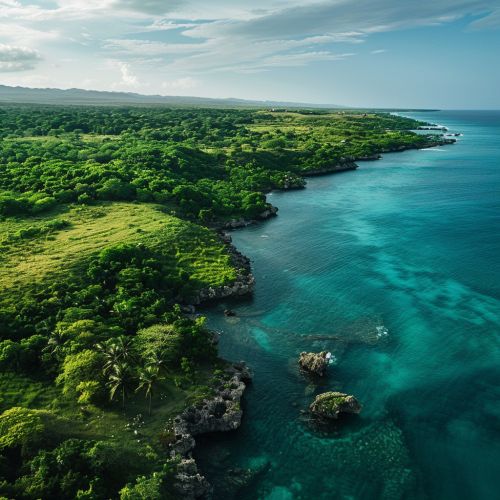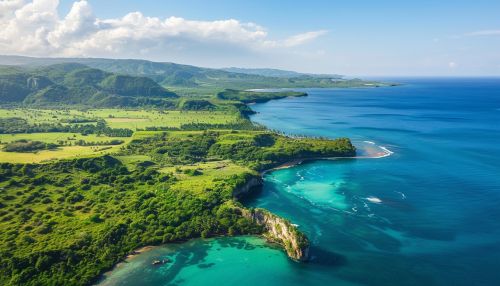Cuba
Geography
Cuba, officially known as the Republic of Cuba, is the largest island in the Caribbean Sea and the westernmost island of the Greater Antilles. The country is located in the northern Caribbean where the Caribbean Sea, Gulf of Mexico, and the Atlantic Ocean meet.


Cuba is south of the eastern United States and The Bahamas, west of the Turks and Caicos Islands and Haiti, east of Mexico, and north of the Cayman Islands and Jamaica. Its area is 110,860 square kilometers (42,800 sq mi), making it the 17th largest island in the world by land area.
The island consists mostly of flat to rolling plains apart from the Sierra Maestra mountains in the southeast, which includes Cuba's highest point, Pico Turquino. The local climate is tropical, moderated by northeasterly trade winds that blow year-round. The temperature is also shaped by the Caribbean current, which brings warm water from the equator.
History
Cuba's history is a complex mix of diverse elements and influences. The island was inhabited by the Ciboney and Taíno indigenous people before the arrival of Christopher Columbus in 1492, who claimed it for the Kingdom of Spain. Cuba remained a Spanish colony until the Spanish–American War of 1898, after which it was briefly administered by the United States until gaining formal independence in 1902.
The 20th century in Cuba was marked by political and social upheaval, with the Cuban Revolution in 1959 leading to the establishment of a socialist state led by Fidel Castro. The country has since been shaped by a series of economic and political events, including the U.S. embargo, the fall of the Soviet Union, and the handover of power from Fidel Castro to his brother Raúl Castro.
Politics and Government
Cuba is a socialist republic, with the Communist Party of Cuba as the ruling party. The constitution of Cuba, adopted in 2019, describes the role of the party as the "leading force of society and of the state". The head of state and head of government are the President of the Republic, a post currently held by Miguel Díaz-Canel.
The national legislature is the National Assembly of People's Power, which has 612 members elected from single-member electoral districts for five-year terms. The structure of the government and the political system is defined by the Constitution of Cuba.
Economy
Cuba's economy is a planned economy dominated by state-run enterprises. Most industries are owned and operated by the government, and most of the labor force is employed by the state. However, in recent years, there has been an increase in the number of self-employed and private businesses.
Cuba's main exports are sugar, tobacco, fish, medical products, citrus, and coffee. Tourism has become one of the largest sources of foreign exchange for the island. However, the economy faces many challenges, including low foreign investment, bureaucratic inefficiency, and the U.S. embargo.
Culture
Cuban culture is a complex blend of native Taíno, Spanish, African, and other cultural influences. This diversity is reflected in a wide range of cultural fields such as music, cuisine, and sports.
Cuban music is a blend of Spanish and African influences, with genres like son, rumba, salsa, and trova. The island is also known for its dances, including the danzón, son, rumba, cha-cha-cha, mambo, and salsa.
Cuban cuisine is a fusion of Spanish, African, and other Caribbean cuisines. It features a variety of ingredients and flavors, with dishes like ropa vieja, moros y cristianos, and lechón.
